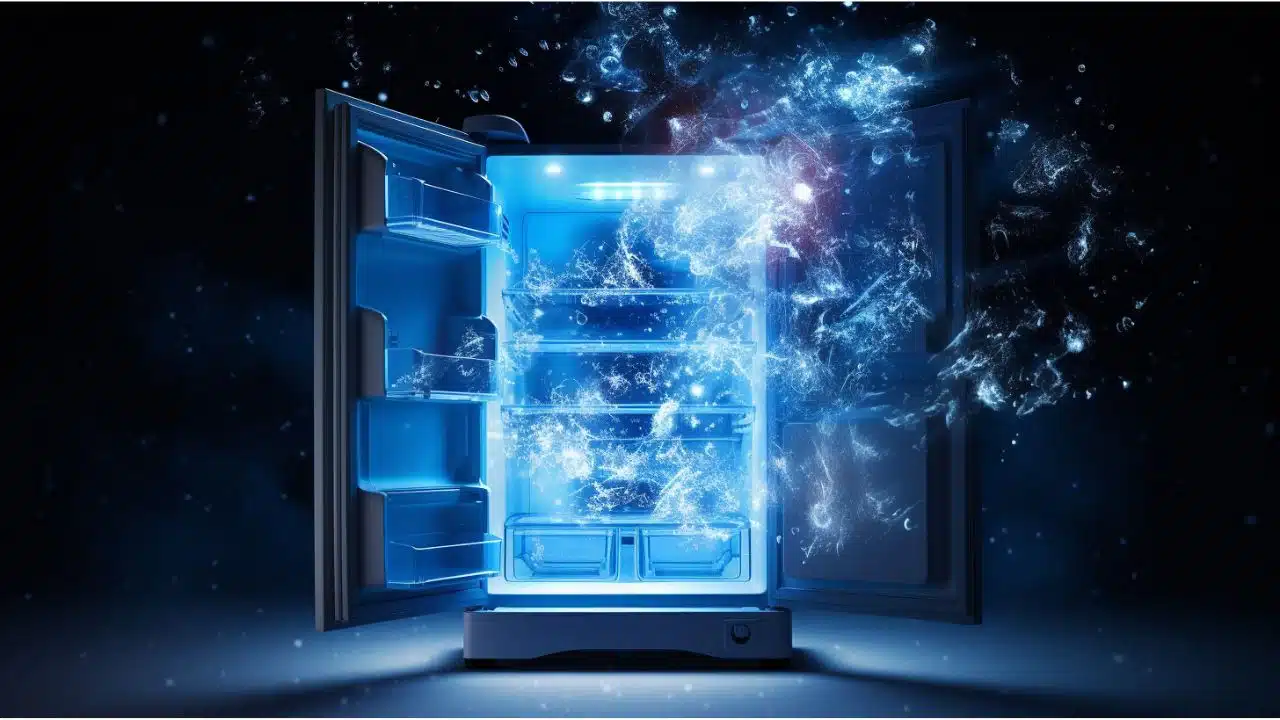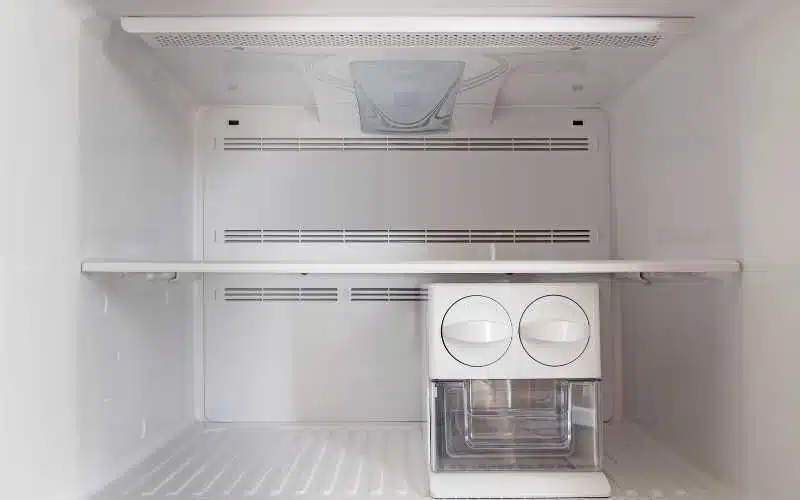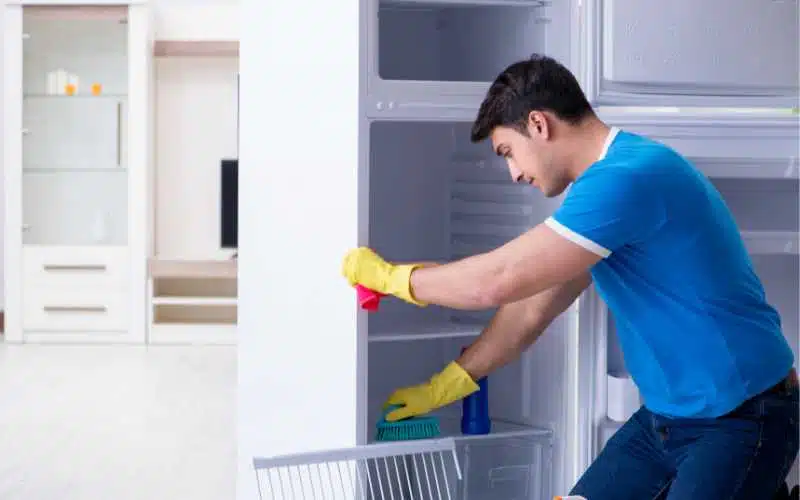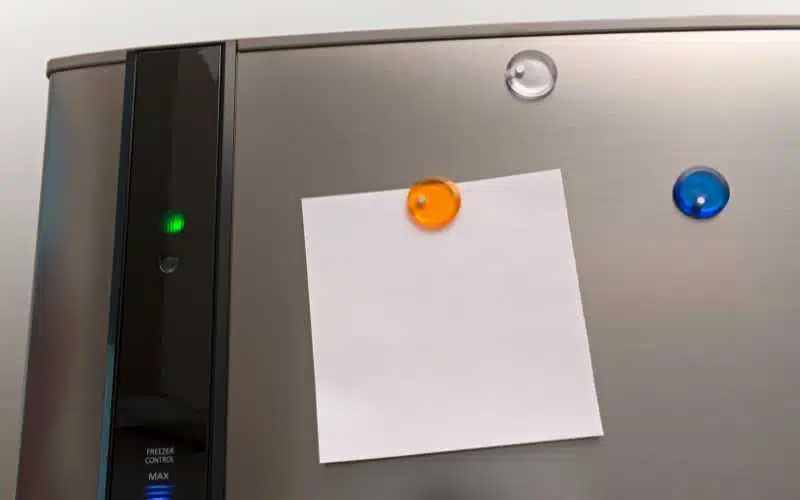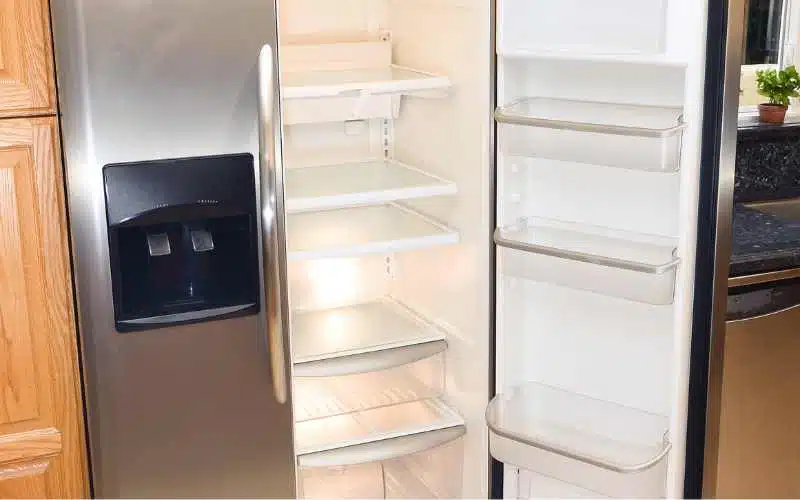Kenmore refrigerator ice makers were designed to last as long as the average refrigerator did in the past.
However, as the company added new features to Kenmore ice makers, the lifespan was cut short.
As a result, in more modern refrigerators, a refrigerator ice maker can only last for five years of use.
Ice maker problems like the decreasing sizes of ice cubes or no ice cube production begin to occur in the middle or towards the end of the refrigerator ice maker lifespan. At first, the ice maker might produce ice cubes irregularly, then eventually, it stops working altogether.
Other ice maker problems plague homeowners, and they are explained below.
Low Water Pressure From House Supply
The housing supply of water may have inadequate water pressure. The pressure in the house water supply must be high enough to get the water inlet valve functioning correctly.
The water inlet valve is in charge of channeling water to the water dispenser and ice maker. But, the water inlet valve can not work when the water supply pressure is lower than 20 PSI.
To solve this ice maker problem, boost the pressure on the house water supply. Do this by first identifying why the pressure on the housing supply is low.
For example, it could result from the water pipes clogged with mineral deposits by hard water. In an extreme scenario, these deposits build up over time and reduce the space in the pipe.
As a result, it blocks proper water flow, and only a tiny amount can pass, drastically lowering the water pressure.
To melt off the deposits deep in the water pipes, call a plumber for professional help.
One of the quickest ways to increase the house water supply pressure is to open the main water valve fully. The valve controls the flow of water in the house pipes.
The valve might have been half shut during household repairs, but a half-shut water valve limits the water flow, thus, reducing water pressure.
When this valve is completely open, it immediately increases the water pressure. This solution does not require external help.
Leaks that channel water out of the pipes and leave just a minimal amount to flow into the house are also one thing to single out when identifying the cause of low water pressure.
To ensure there are leaks in the water pipes, shut off all faucets and the water valve. Then, check the water meter and note the reading.
After two hours, reread the water meter. If there is an increase in the reading, there are leaks. Call in a professional immediately.
Sometimes, boosting the house water supply pressure might prove to be futile. This could be because the house water supply travels uphill and over a great distance to reach the home.
This negatively affects the water pressure. The solution to this particular case is to install a home water pressure booster. It is affordable and does the job well.
Defective Water Inlet Valve
The water inlet valve opens to let water into the dispenser and the Kenmore ice maker. Once the water inlet valve develops a fault or loses pressure in the water supply, it cannot supply water.
The Kenmore refrigerator ice maker will not make ice when the water supply ceases.
To solve this problem, check the water supply pressure to ensure it is 20 psi and above. If this is the case, the problem comes from the water inlet valve itself.
The water inlet valve may not be able to utilize as much power as it used to. This restricts its functions. Use a multimeter to check for power to the water inlet valve.
The multimeter tests the solenoid coils of the water valve for continuity.
If a humming sound is coming from the water valve, but no water comes out, unplug the refrigerator and clean the solenoid coils.
Should the water valve remain unresponsive, replace it.
Failed Ice Level Control Board
In some refrigerators, the ice level is controlled by an infrared beam. It senses the ice level in the bucket and signals the ice maker to either make more ice or stop making ice.
When the ice level reaches the highest point of the ice bucket, it disturbs the beam, and the power control board shuts off the ice maker.
In the same way, when the ice level drops below the beam, the power control board signals the ice maker to make more ice.
Unfortunately, once the ice level control board fails, it stops making ice.
Ensure the ice level control board receives enough power to prevent sudden failure. However, replace it once there is a failed ice level control board in the refrigerator.
A Fault in Ice Maker Assembly
One part of the ice maker assembly may develop a fault, and this ultimately affects the functionality of the whole ice maker.
As a result, the ice maker stops producing ice, and it is difficult to determine where exactly in the ice maker’s assembly the fault is coming from.
You cannot find a replacement for the defective component. There is no room for ice maker repair as you will buy the entire ice maker assembly just to solve the problem.
Therefore, replacing instead of repairing the ice maker is required here.
Before replacement, check the condenser fan, water line, and water inlet valve to ensure that only the ice maker needs replacement.
If there are no other faults found, ensure that the refrigerator’s temperature is at 15°F, then replace the ice maker assembly.
Freezer Temperature above 10°F
The ideal freezer temperature is within the range of 0°F to 5°F. When the freezer temperature is above this range and above 10°F, the ice maker cannot freeze and produce ice cubes properly.
The temperature may remain high after resetting the freezer temperature, and the ice maker is inefficient.
This abnormal rise in freezer temperature can result from dirty condenser coils, frozen evaporator coils, or defective condenser fans.
In addition, if the evaporator has frosted over, part of the defrost system has likely failed.
Unplug the refrigerator and remove the fan covering to get the fan running again. In many cases, the evaporator coils and condenser fans cannot function properly because of the build-up of ice on them.
In such cases, simply allow the ice to melt off. This quickly solves the problem, as long as the motor windings are still in good shape.
The fans might also stop working because the fan blades have become bent over time and jamming against the metal fan shroud. When the fans are bent, replace them immediately.
Do not try to straighten them as they would be unbalanced.
The buildup of dirt in the condenser coils can easily be removed by penetrating oils. Once these solutions are put in place, the freezer temperature should drop back to normal.
Conclusion
The solutions to Kenmore refrigerator 795 ice maker problems are relatively easy, but contact a professional to handle your ice maker in case of difficulties.
Sometimes, the solution to an ice maker issue is simply to reset the ice maker. Push the button, and if it has a tiny hole, you might need a paper clip to push the button.
Press and hold for three seconds.
